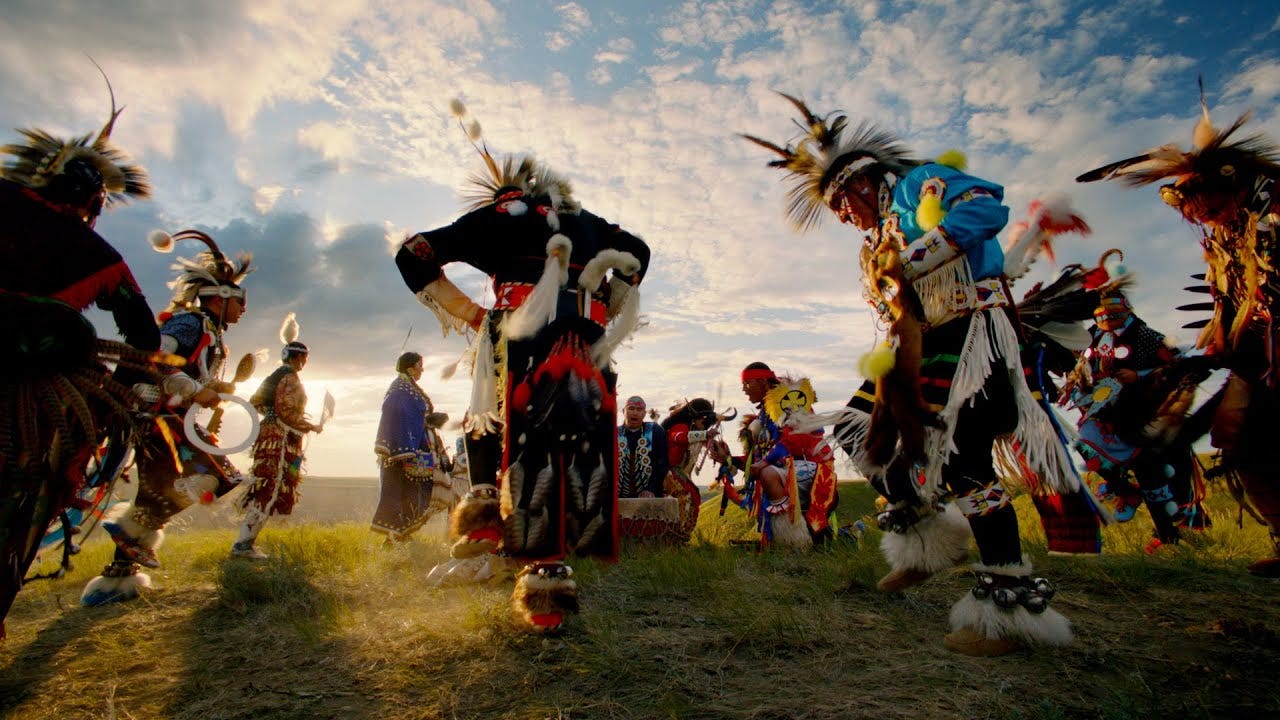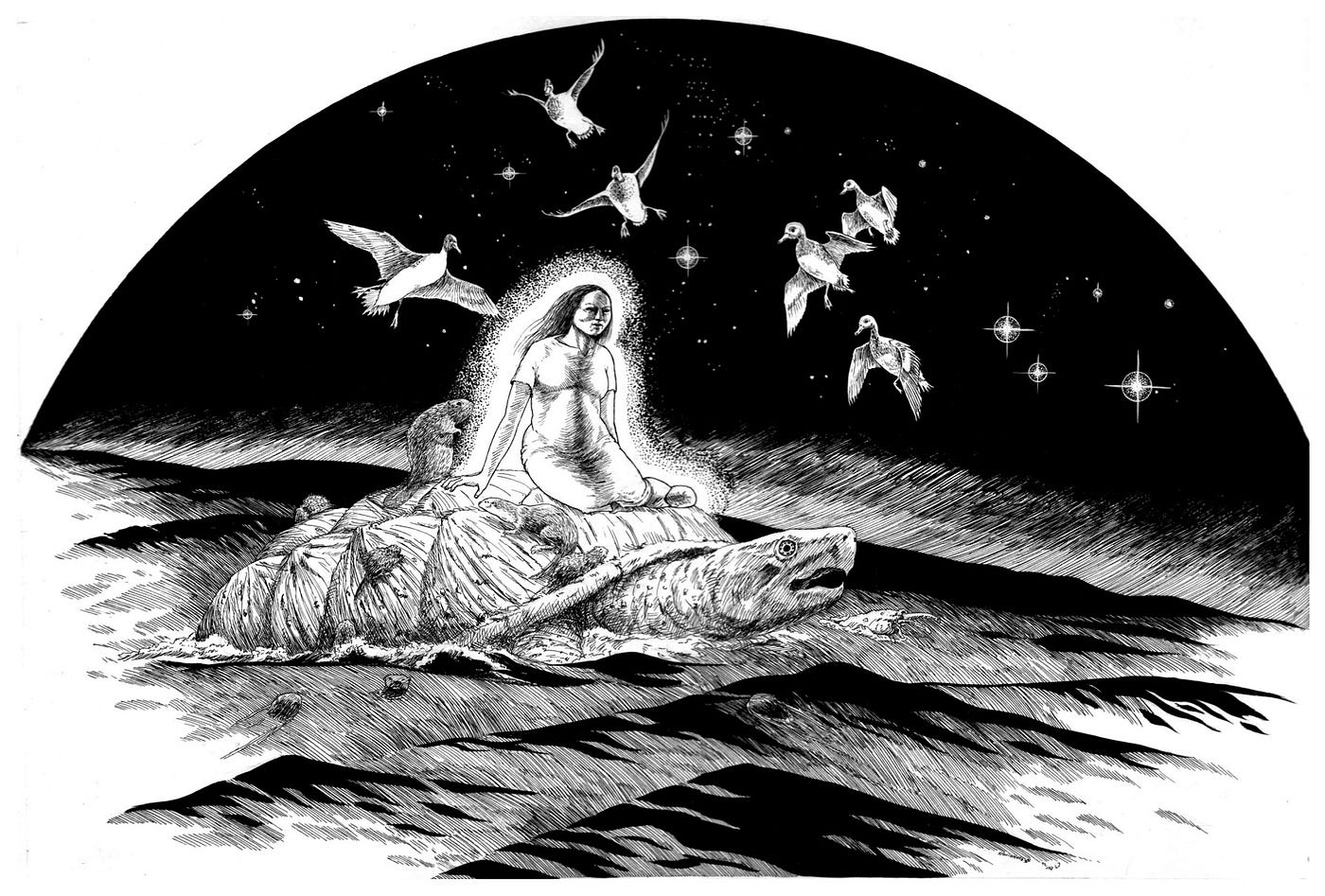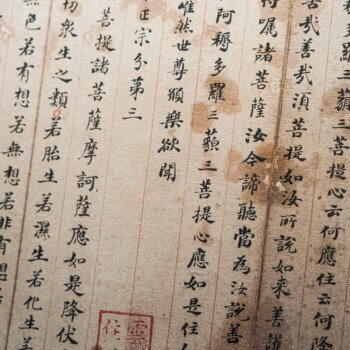Not a day goes by that I don’t ask myself how we got here. How we inherited a world of limitless, self-perpetuating bounty so big and complex that we still barely understand it; and yet, somehow, we have managed to mortally squander our inheritance, nonetheless.
Medical intervention provides us with an apt corollary. Today, ‘healthcare’ takes one of two forms. The first focuses on the treatment of illnesses themselves, attacking them with drugs, surgeries, technologies and topical salves. The second—rarer—approach aims to uncover and treat the underlying causes of illness, employing an understanding of environmental stressors and resources to guide the employment of therapies and lifestyle changes that collectively reduce the triggers of its manifestation.
Simply put, one methodology seeks to treat illness, while the other seeks to prevent it in the first place.
This is not unlike our relationship to the planet, and to one another. Understanding why we do things that sicken both, it seems to me, is the best way to reach beyond treatment—“doing less bad”, as LEED co-founder and sustainability pioneer Bill Reed used to tell me—and into the realm of instituting practices that prevent harm, and thus don’t require future mitigation.
To do this, we must uncover the narrative drivers of our behaviors, and then consider replacing them with more benign or beneficial ones.
Luckily, the path to plenty is well-worn. We’ve just forgotten it.

Origin Stories
Because our individual lives are so short, we are lost to our own past—to what our one hundred billion human ancestors lived through, and learned over 330,000 years. That is, unless that lore was recorded in stories. Luckily, much of it was. We are master storytellers. We’ve invented gods and their religions, nations and their identities, races and their hierarchies, laws and their soldiers, currencies and their economies, and equally—toxically—the “myth of scarcity”. You can read my thoughts on that last concept, here.
Our stories—more than any other human quality—are what has harnessed our collective energies toward becoming “greater than the sum of our parts” in terms of human reach. That is, stories have been the galvanizing force of inter-human acts, leading us to where we are, today, from farming to city-building to empires to wars to moonshots and beyond.
No human fictions have exerted a more powerful influence over human behavior than our origin stories. These are our “raison d’être”. They have aimed us, given us a good push, and continue to drive our trajectory, along with the acts that fulfill our perceived purpose.
In the space of our origin stories, we can find where things began right, then went horribly wrong.

Symbiosis
Before we envisioned a single vengeful God, there were constellations of deities that lovingly tended to every aspect of the planet, humans included. There were gods for the oceans, forests, mountains, fertility, tool-making, hunting, harvests, love, precipitation, perception, wind, weaving, the dead, rebirth, vitality, fire, animals, thunder, beauty, diplomacy, the moon, sacrifice, healing, homosexuality, the underworld, speech, the anus (I kid you not), and a thousand other protectors.
In every native culture on Earth, we conjured them to reflect the complexity of our world to help us make our way in it. And in all of them, a symbiotic relationship between the sacred and the everyday guided life on Earth. In fact, “sacred” and “everyday” were interchangeable terms, because we saw ourselves as an extension of the Earth, and were filled with deep gratitude for the bounty it provided. Our job was to give thanks for the deities’ generosity, by helping them tend to their domains.
Every ancient culture, bar none, brimmed with spirits. Yoruba. Sumerians. Assyrians. Egyptians. Babylonians. Norse. Greeks. Romans. Inca. Maya. Aztecs. Hindus. Maori. Native Americans. On and on, god upon god.
In the best of these, the flora, fauna, elements, seasons, land, sea, sky and fire fueled human aspiration, love, belonging, purpose and spirit.

Skywoman
The People of the Longhouse—the Haudenosaunee—have an especially powerful origin story I learned about while reading the book Braiding Sweetgrass, by botanist/scientist/professor and member of the Citizen Potawatomi Nation, Robin Wall Kimmerer.
Called Skywoman, it tells of a being that fell through a hole in the sky toward a water world, upon which the native geese mobilized to break her fall, holding her aloft until a massive turtle could arrive and offer its back to steady her. Thereafter, a menagerie of marine animal species dived one by one in an attempt to dredge mud from the sea floor, just so that Skywoman—not a sea creature—could make a home on dry land.
Eventually, a muskrat—the weakest semi-aquatic creature of all—sacrificed its life on a dive and in doing so procured a daub of mud for her, which it clutched tightly in death as it floated to the surface. Skywoman then spread it on the turtle’s back with her feet, dancing in gratitude, where it grew into an island, and eventually into the Earth’s landmasses. Thereafter, Skywoman set to work sowing the fruit pits and seeds that she had carried with her from her native world—a gift from their Tree of Life.
Per Kimmerer:
“She tended each one until the world turned from brown to green. Sunlight streamed through the hole from the Skyworld, allowing the seeds to flourish. Wild grasses, flowers, trees, and medicines spread everywhere. And now that the animals, too, had plenty to eat, many came to live with her on Turtle Island.”
Skywoman’s story is one of symbiosis with all parts of the living world. It guided a life full of gratitude-fueled stewardship for countless native people of North America, until colonialism forcibly silenced it.

The Fall From Grace
Our descent from “inclusion and plenty” to “banishment and scarcity” was quick.
Look at the image above. It shows a scene from the Judeo-Christian origin story: the banishment of Adam and Eve from the Garden of Eden—an ancestral homeland frankly not unlike the one that Skywoman helped to create, in her gratitude. [Adam and Eve can be seen at center left, exiting Eden into a cold, inhospitable world.]
In his essay, Monotheism and its Discontents, famed author and commentator Gore Vidal wrote:
“The great unmentionable evil at the center of our culture is monotheism. From a barbaric Bronze Age text known as the Old Testament three anti-human religions have evolved — Judaism, Christianity and Islam. These are sky-god religions.”
He went on to describe the sky-god as patriarchal and jealous. “He requires total obedience from everyone on earth, as he is in place not just for one tribe but for all creation.”
Kimmerer shares her people’s origin story, presenting it alongside that of monotheism, to illustrate that powerful fictions shape our relationship to one another, to the Earth and its ecosystems. She offers an enlightening lens through which to view why it is that we now no longer act in deference to the land—as a collaborator—but in opposition to it—as a foe to be vanquished.
She writes:
“On one side of the world were people whose relationship with the living world was shaped by Skywoman, who created a garden for the wellbeing of all. On the other side was another woman with a garden and a tree. But for tasting its fruit, she was banished from the garden and the gates clanged shut behind her. That mother of men was made to wander in the wilderness and earn her bread by the sweat of her brow, not by filling her mouth with the sweet juicy fruits that bend the branches low. In order to eat, she was instructed to subdue the wilderness into which she was cast.
Same species, same earth, different stories.
One story leads to the generous embrace of the living world, the other to banishment. One woman is our ancestral gardener, a co-creator of the good green world that would be the home of her descendants. the other was an exile, just passing through an alien world on a rough road to her real home in heaven.”
Eve’s Christian descendants arrived on the shores of a land already brimming with some 18 million inhabitants—half of Canada’s population today—living harmoniously with the land they cherished and tended.
Acting in accordance with their own origin story, the settlers practiced a doctrine called Manifest Destiny. As I wrote in an eponymous article:
“Manifest Destiny was the early settlers’ idea that God himself favored the culturally and racially superior “White” Americans, which demanded that they subdue, convert and/or dispatch “savages” of all other colors and creeds, then take their rightful place as overlords of the world, and the people in it.”
Does the paragraph above make you wince?
Manifest destiny was the grandchild of the expulsion story, in which Eve was forced to “subdue the wilderness into which she was cast”.

Friend or Foe?
Kimmerer’s book frames these driving narratives as choices. One of them offers the path to repairing our relationship to the land with humility, the other to subduing it with hubris. She writes:
“Look at the legacy of poor Eve’s exile from Eden: the land shows the bruises of an abusive relationship. It’s not just the land that’s broken, but more importantly, our relationship to land.
In the Western tradition there is a recognized hierarchy of beings, with, of course, the human being on top—the pinnacle of evolution, the darling of Creation—and the plants at the bottom. But in Native ways of knowing, human people are often referred to as “the younger brothers of Creation.” We say that humans have the least experience with how to live and thus the most to learn—we must look to our teachers among the other species for guidance.
Plants know how to make food and medicine from light and water, and then they give it away.
When Skywoman scattered her seeds across Turtle Island… she was leaving us teachers… We need to learn how to listen.”
In Rebalancing the Earth is Dead Simple, I offer a few paths to repairing the land itself, starting with reforestation, a reversal of sprawl, the elimination of our most environmentally costly foods, and a modernization of both farming and building. All of these are not only doable, they are easy.
In Do No Harm, I suggest a new doctrine that would benefit planet and people alike, with a form of ‘naive reverence’ for shepherding long-term sustainability, over the pervasive practice of maximizing short-term extraction.
In The Economics of Enough, I share a set of precepts that free up our inherent generosity to reveal a world of plenty, rather than seize up resources to reinforce the Myth of Scarcity.
In Finite and Infinite Players, I contrast mindsets and value systems that build us up (infinitely) rather than tear us down (finitely)—a set of paradigms that dovetail with the contrast between Skywoman and Eve, respectively. More on this below.
And in The Relationship Economy, I point the way to building a modern society based on collaborative, collectively owned and beneficial contribution, based on real-world (if little-known) groups operating successfully today, whose actions stem from the tenet “People before things”.
All of these stories—and many more I’ve written—reinforce one another in the sense that they espouse a world view of plenty, shared through acts of generosity from which all living beings benefit, insofar as our collective, multi-generational thriving is predicated on how we treat the resources we’ve inherited in a closed-loop system.
One of these paths—the one hinted at in this story, and in the others I’ve highlighted—leads to perpetual and symbiotic long-term wellbeing, consistent with the narrative of generous deities tending to every aspect of the planet, including us.

Look at the word cloud above. It was produced by New Zealand researcher Nikki Harré. Per an article in Psychology Today:
“It is the sum of the responses of workshop participants when they asked to list three infinite values; things that could be defined as ‘Sacred, precious or special; of value for their own sake. They make the world truly alive. Things of infinite value can be of any dimension: an emotion, a relationship, part of the natural world, a quality or an object.’ A bigger font indicates more people listed that word.”
These infinite values—health, vitality, empathy, nature, inclusion, compassion—lead us to a life of plenty the likes of which Skywoman’s descendants enjoyed until they were hunted, displaced and forced to adopt monotheism’s origin story and tenets, or be killed.

Harre’s other word cloud represents the flip side of the story. Per Psychology Today:
“Finite values were defined as those things that have worth because of what they signify or enable. They may be of value only to a particular group if people deem them so. They too can be in any dimension: an emotion, a relationship, part of the natural world, a quality or an object.”
Finite values like those espoused by the sons of Eve (it’s almost always sons)—status, power, economics, winning, law, wealth, success—set us at odds with our own planet and the things on it on false terms, in competition for finite resources. I refer to this as The Myth of Scarcity. Finite value peddlers include people with origin stories that stem from a mighty and vengeful God, who banished us from plenty and told us to subdue the land, its flora and fauna, while we bided our time until we could “come home” to heaven.
From Deities to Dollars
It’s not difficult to see how an origin story that ripped us from our “mother”, told us we were sin incarnate and sent us into an anti-Edenic apocalypse matured into one focused on battling the Earth and its denizens for our survival.
The Earth is to be feared, the narrative almost begs, and humans, whom the one true god made in his very own image, can only survive the onslaught if they if they act like him, as set out in his holy scripture.
Cue: vengeance, wrath, fire, brimstone, purgatory, damnation, jihad, supplication, crusades, plagues, rape, genocide, stoning, crucifixion, holy wars, exceptionalism, inquisitions, false idols, stake-burnings, castration, enslavement and other legacies.
The children of Christianity and Islam now number half the humans on Earth. As religions fueled by forced conversion, this isn’t surprising.
Final Thoughts
We are not at war with the Earth and its denizens. Or at least, we needn’t be. It’s just that the origin story of divinely sanctioned exceptionalism and violent conflict won out over that of gratitude, inclusion and humility. Sadly, this continues to play out in our relationship to the planet and one another.
Regardless, the good news is that we always have choices to make, and can refocus at any time, without a permission slip from our deity.
We can be either collaborators (infinite) or competitors (finite). Stewards (infinite) or overlords (finite). Proactively multi-generation-minded (infinite) or reactively self-centered (finite). Aimed at continuing play (as an infinite teammate) or ending play (as a finite victor). The youngest creatures with the most to learn (infinite) or the greatest ones with the power to control (finite).
These forks in the road stem all begin with the same thing: choice.
Origin stories matter, greatly. They ground us, and frame life toward certain ends. Some origin stories see Earth as a way-stop to a great heavenly reward. Others see it as a permanent home to be tended, so it provides for our descendants.
Regarding this last concept, the Seventh Generation Principle is based on an ancient Haudenosaunee (in this case, Iroquois)* philosophy that the decisions we make today should result in a sustainable world seven generations into the future.
What an idea.
It’s important to be mindful of the power these stories exert not only on us as individuals, but also on our societal constructs. As Vidal pointed out, Americans may have separated church and state, but the laws (and actions) of its keepers are a clear reflection of monotheism’s origin story.
Here’s the thing: there is no reason a heaven-centric singular god cannot share a planet with a terrestrial Earth mother and her infinite deities. The chief impediment to doing so is that not every human acts consistently in accordance with the “better angels of their nature”, as Lincoln implored us to do on the eve of Civil War, in a nod to Christianity’s higher aspirations.
It comes down to the stories we choose to help guide our acts.
With this piece, I hope to introduce those who aren’t familiar with the Haudenosaunee’s origin story of Skywoman to a people whose lore guided them to revere the land, mindful of their interdependence with all of its creatures, and humbled by the relative youth of their species. A people steeped in gratitude and collaborative spirit, in accordance with their worldview.
They are a people who fell prey to the children of a very different origin story, who continue to desecrate the planet and its creatures, because they see themselves as their master.
The legacy of Skywoman can save us.





























